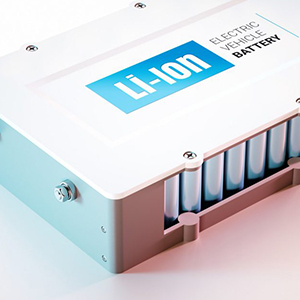
In a way, batteries are at war with one another. They are constantly competing for our attention, vying to be the one we choose to power our many gadgets or vehicles. As a consumer, it’s easy to get lost in the maelstrom of choices.
One such battle that continues to wage is between lithium-ion batteries and lead acid batteries, which can power everything from cars to smartphones. But how can you tell which battery is better?
Well, fear not. We’re here to tell you who deserves your hard-earned dollars in the lead acid vs lithium ion battle! So let’s jump right into it.
Lead Acid Vs Lithium Ion: Dawn Of Price Differences
When it comes to a war of base cost, lead acid batteries tend to take the win with ease. Thanks to their quick and cheap manufacturing process, lead acid batteries have a lower initial cost than their lithium counterparts. So we’re done, right?
Well, the price war is a little more complex if you’re looking at things long-term. While lead acid batteries are cheaper if you’re only looking at the initial price, they need frequent maintenance to prevent failures. Lengthy charge times are also common.
To top it off, these batteries are notorious for having a short cycle life (which is how many full discharges and recharges a battery can go through before it loses efficiency). You could burn through a lot of lead acid batteries real quick if you’re not careful or have a run of bad luck.
On the other hand, lithium ion batteries have the durability to go the distance. They need less maintenance than lead acid batteries and have longer cycle lives. So in the long run, lithium ion batteries can be the cheaper option.
You may also find it important to know that lithium ion batteries (relatively speaking) are still a new technology. Their base price will likely go down as time goes on and people figure out less expensive ways to produce these batteries.
The War of Environmental And Personal Safety
When it comes to saving the planet, lithium ion batteries take home the figurative gold in this category. The reason for this stems from the fact that a major component of lead acid batteries is, well, lead.
Although companies that sell these batteries have taken considerable steps towards safely recycling these batteries, it’s far from perfect. Negligent factories can end up exposing that lead to nearby communities, which poisons plants and animals. In humans, the effects of lead poisoning can range anywhere from brain damage to death.
Looking at it from a larger scale, a great deal of lead mining happens to make these batteries. This, in turn, consumes a lot of resources and destroys local habitats. Lithium ion, while still posing some of its own dangers to people if misused (it is a battery, after all), is safer for the environment and those who live in it.
As for regulations regarding the transpiration of these batteries, both have some considerable restrictions. Don’t think you can take either of these bad boys on a plane, for example.
Through The Fire And The Weight Regimen
One important thing to know about your battery is how it operates under different temperatures. After all, you’d want a car battery to be better equipped to face the elements than a device that stays inside all the time, right?
Well, all batteries don’t like extreme heat or cold: it can cause them to charge incorrectly and lose cycle life. Lithium ion has a few more dangers when it comes to heat, however: they can experience a phenomenon called thermal runaway. Thermal runaway happens when the battery is not able to get proper venting and flammable pieces inside it begin to combust.
This can, in turn, lead to the device the battery is inside either igniting or exploding. This is a rare occurrence and is more likely to occur in smaller devices like laptops or headphones (where there is a greater power demand for smaller batteries). Regardless, it’s still something to be cautious about.
Don’t count lithium ion batteries out yet though: they operate much better under cold than lead acid batteries do. While lead acid batteries can charge at lower temperatures, they don’t do it very well (at least compared to lithium’s charge at its lowest chargeable temperature).
Lithium also takes the win when it comes to base weight. Lithium ion batteries are lighter-weight than lead acid batteries. This allows consumers to transport these batteries around with less hassle. After all, who wants to feel like they’ve entered a powerlifting competition every time they lug a battery around?
Looking At The Charge
We’ve touched on it here and there a little, but how do these batteries do regarding their charge? Well, lithium ion batteries have very loose charge “rules”: it takes about 2 hours to charge them to full power, and you can get a fair amount of work from only minutes of charge time. On the other hand, lead acid batteries need a strict 8 hours of charge for 9 hours of work with 8 hours for cooling.
Both types of batteries also boast a very low self-discharge rate. This means that lithium and lead acid batteries will hold on to more of their charge when not in use.
Lithium batteries win their first plus in this category by being able to store a lot more energy in a much smaller package, thanks to the chemicals inside these batteries. Lead acid batteries are on the lower end of this scale across all types of batteries, not just in the head to head with lithium ion. Lithium batteries tend to have a shorter charging time than the aforementioned lengthy one of the lead acid batteries.
Charging (Get It?) Forward
You should now know in the battle of lead acid vs lithium ion batteries which one is right for you!
Do you want to know more about the various pros and cons of different batteries? Or what advancements are being made with lithium batteries? Well then, you should check out more of the blog posts on our website!
So until next time, keep your batteries charged, your car running, and remember: stay away from lead plants.
 by Vladimir Karimov | March 5, 2020
by Vladimir Karimov | March 5, 2020